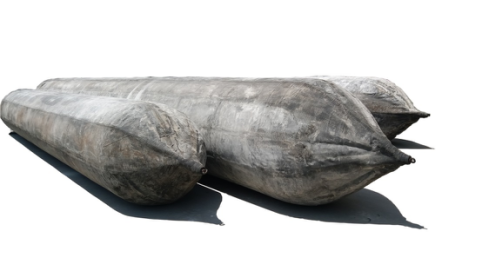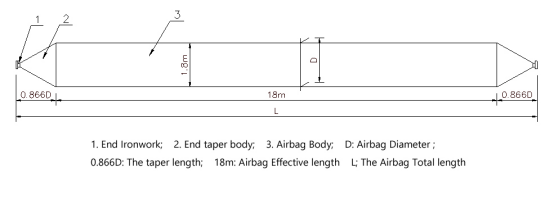Biodiesel raw materials are not enough to eat
It is understood that the bio-diesel project in the province is just in the ascendant. In addition to the above three projects, Qinhuangdao City and Gu'an County of Langfang City are currently under construction. Two projects with an annual output of 100,000 tons are under construction. Baodu City's Wangdu County and Handan City, Guantao County, Tangshan City, and Hengshui City are also under construction. .
However, what these processing companies did not expect was that the raw materials they needed were not enough to eat. According to Zhenghe, as the price of refined oil products has risen, biodiesel, which is several hundred yuan lower than petrochemical diesel, has become very popular. Unfortunately, the annual production capacity is currently only 30,000 tons, which is mainly due to insufficient raw materials. Fu Ming Oil Group Chairman Hu Ming School said that their bio-diesel project mainly uses waste oil such as swill oil and waste oil as raw materials. The annual designed production capacity is 100,000 tons, and the actual output is 30,000 tons. The raw material issue is to restrict enterprises. A bottleneck in development. He calculated that the conversion rate of diversion oil and waste oil into biodiesel exceeded 95%, and that the annual output of 100,000 tons of biodiesel would require about 120,000 tons of raw materials to be purchased. At present, only 30,000 can be purchased. 40,000 tons. Sinopec Shijiazhuang Refining & Chemical Co., Ltd.'s biodiesel project has a designed annual production capacity of 50,000 tons, but it can currently produce only 2,000 tons. According to Zhao Lijuan, an engineer, due to the shortage of waste oil and raw materials such as waste water and waste oil, it can only be considered as “trial productionâ€.
According to reports, Zhenghe’s main raw material used for biodiesel production is Pistacia chinensis, which has an oil yield of 30%, an acre real estate seed of 600kg, and 200kg of oil. Forestry experts believe that Hebei Province is the main distribution area of ​​Pistacia chinensis and Taihang Mountain Region is distributed from south to north, with a preliminary statistics of 1 million acres. However, due to the natural scattered nature of Pistia many years, coupled with extensive management, resulting in a late fruiting tree, low yield, the exploitation and utilization value of these Pistacia chinensis is extremely low. The State Forestry Administration signed a cooperation framework agreement with CNPC last year on oil forest integration. During the “Eleventh Five-Year Plan†period, it will build a 6 million-mu fuel oil forest demonstration base throughout the country and plans to implement 1 million mu this year, of which Hebei will assume 50,000 mu of tasks. However, the current plan is only encouraging, and instead of supporting subsidies like “returning farmland to forestsâ€, people are unaware of the benefits and their enthusiasm is affected. Moreover, the 50,000-mu task is also difficult to meet the huge demand of biodiesel companies. In addition, as a raw material for biodiesel production, Coptis chinensis is not enough for planting in the mountains, and it must take the path of large-scale development.
Many people in the industry also pointed out that the bio-diesel project should not be blindly launched when the raw material recovery mechanism is not perfect and raw materials are difficult to fully protect. They believe that the country should establish and improve the nationwide non-food biomass fuel purchase, deployment and sales system. At the same time, with reference to the financial and taxation preferential policies of Chenhua Grain Fuel Ethanol, which has been implemented so far, fiscal and tax preferential policies have been formulated for the production and sales of non-food biodiesel.
Airbag Launching technology was developed based on traditional slipway launching mode, it used flexible Marine Airbag to replace slipway and sliding plates, so as to overcome many short comings of traditional slipway launching mode. Flexible airbag is like elastic cushion to bring the ship free pitching during the launch course and the pressure under hull bottom to be moderated due to larger flexible contact area, which protects the hull structure and surface paint against damage. CHANGLIN ship launching rubber airbags are developed especially for ship launching technology, which process extremely high bearing capacity, resistant to wear and to salt water corrosion, its main function is for transporting ship to launch or upgrade.
the applications of airbags except ship launching can widely use to transport large-size construction modules, to salvage sunken ships and service and as a container for storing liquid and gas and as a pontoon to building bridges and pipelines and so on.
|
Type code |
Diameter, D/ m |
Rated working pressure, P/ kPa |
Unit length bearing capacity at the compression deformation rate reaches 70 % and the inner pressure reaches the rated working pressure, QH/ m |
Maximum permit inner at the compression deformation rate reaches 70 %,Pmax/kPa |
|
QP5 |
0.8 |
210 |
184 |
630 |
|
1.0 |
170 |
186 |
510 |
|
|
1.2 |
140 |
185 |
420 |
|
|
1.5 |
110 |
181 |
330 |
|
|
1.8 |
90 |
178 |
270 |
|
|
2.0 |
80 |
176 |
240 |
|
|
QG6 |
0.8 |
245 |
215 |
740 |
|
1.0 |
200 |
219 |
600 |
|
|
1.2 |
165 |
217 |
490 |
|
|
1.5 |
130 |
215 |
390 |
|
|
1.8 |
110 |
218 |
330 |
|
|
2.0 |
100 |
220 |
300 |
|
|
QG7 |
0.8 |
295 |
259 |
880 |
|
1.0 |
240 |
264 |
720 |
|
|
1.2 |
200 |
264 |
600 |
|
|
1.5 |
160 |
264 |
480 |
|
|
1.8 |
130 |
257 |
390 |
|
|
2.0 |
116 |
255 |
348 |
|
|
Note: Rated working pressure, P, may deviate±5%.; Compress deformation may deviate ±2%. |
||||



Marine Airbag
Marine Airbag,Marine Airbags,Moving Marine Airbag,Upslip Marine Airbag,Landing Marine Airbag,Shipbuilding Marine Airbag,Barge Marine Airbag,Fish Boat Marine Airbag,Warship Marine Airbag
Shandong Shine Machinery Co.,Ltd , http://www.jnclqnkq.com